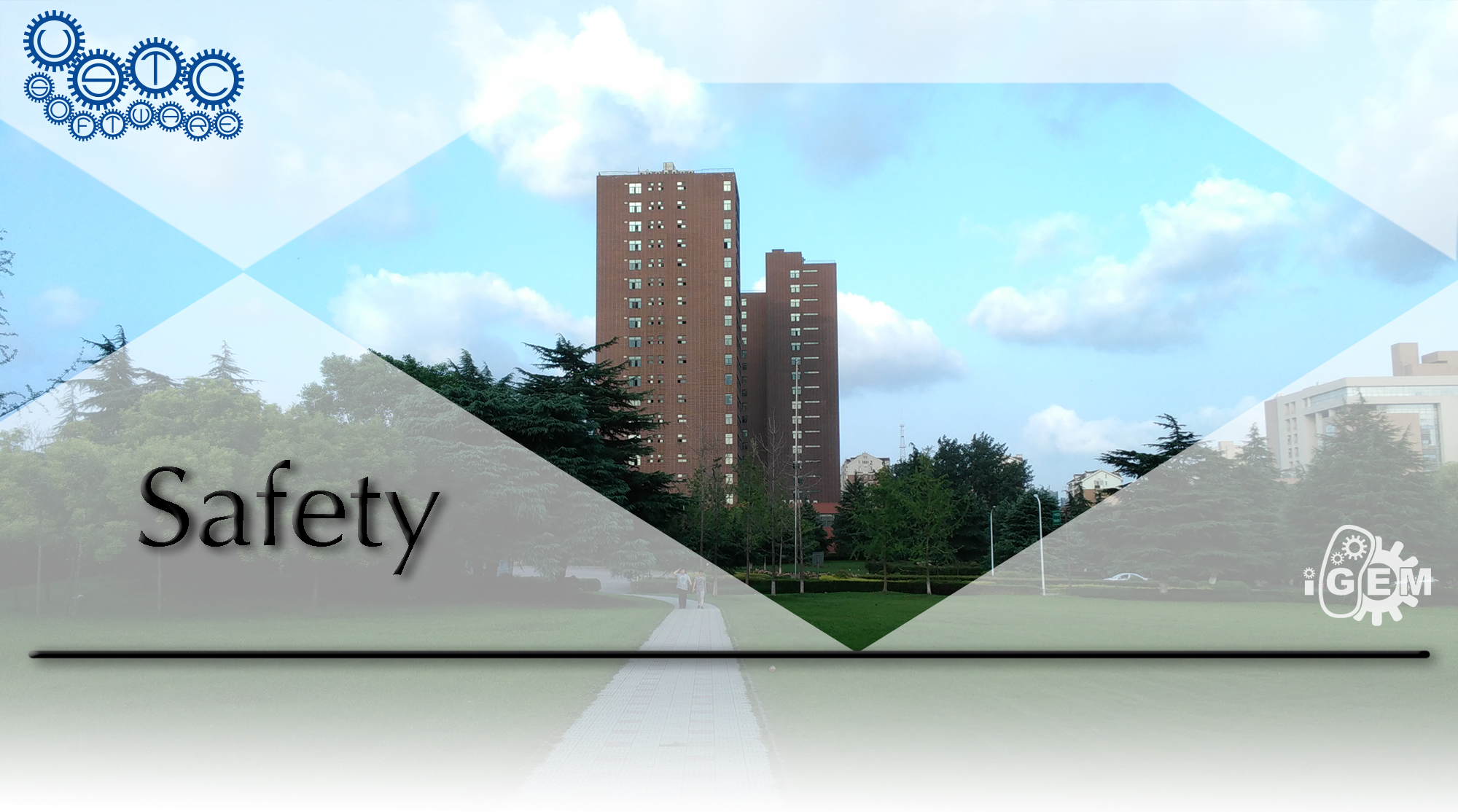Team:USTC-Software/Safety
- Home
- Project
- Team
- Technology
- Notebook
- Requirements
- Medal
- Safety
- Collaborations
- Human Practices
- Attributions

Safety
About Our Software
Q1: Are you using the iGEM Software repository at github.com/igemsoftware? If you have instead stored your code elsewhere, please explain where and why you have put it there. If your code is not in the iGEM repository, are you using any version control system such as Git, CVS, or SVN?
A1: Yes, finally, we use the iGEM Software repository at GitHub. Besides, at the beginning of the project, we use the Gitlab for the testing.
Q2: Does your software store any private data supplied by the user? (For example: the user's name and email address, passwords, DNA sequences, circuit designs, etc.) If yes, please describe what kind of data is stored. If no, skip the rest of this question and move on to question 3.
A2: No, we won't store any private data about the users.
Q3: Does your software let the users create a design by choosing parts/genes from a list/database, such as the Registry? If so, which lists/databases are included? Is there any restriction on which parts/ genes the user can choose?
A3: No, uses won't choose parts or genes from any database. Instead, we have some built-in gates whose components are derived from the Registry of Standard Biological Parts.
Q4: Does your software allow users to submit new data into any public lists or databases? If so, do you check the new data for errors before allowing it to be written?
A4: No, we don't allow users to submit new data into any public lists or databases. However, users could try to create new gates and store them in the local documents supposed that they download our software.
Q5: Is your team also doing biological work in a wet lab ?
A5: No, we do not work in any wet lab capacity. We complete our project via computers.
Safety Form
Q1: What is your chassis organism? Do you plan to experiment with any other organisms, besides your chassis?
A1: Our track is Software, as a result, we would not submit any parts to the iGEM. Hence, we don't have chassis organism.
Q2: How will your project work?
A2: The Synthetic Biologists could use our software to transform truth table into Logic Gates with definitive biological substance, besides, they could use our Simulation feature to verify whether the result is satisfactory. If the result is good, they could use the DNA sequence to wet lab experiments.
Q3: What risks does your project pose at the laboratory stage? What actions are you taking to reduce those risks?
A3: We do not work in any wet lab capacity. We complete our project via computers.
Q4: How would your project be used in the real world?
A4: They could use our software to assist them to design gene circuits and validate them by wet lab experiments.
Q5: What risks might your project pose, if it were fully developed into a real product that real people could use? What future work might you do to reduce those risks?
A5: This project has been constructed exclusively in silico. Therefore, we anticipate no risks or safety issues from any wet lab experiment. Since we focused only on developing software and did not interacting at all with any biological components, we cannot foresee any new safety risks in combining pathogens in any new and novel way. Working and constructing new and novel biological circuits are at the risk of the experimenter. We won't take responsibility for any kind of hazards or risks arising from the results returned from our work. The safety of our fellow scientists is one of our utmost priorities, hence, any lab that wishes to use SBiDer for their own research purposes must, at all times, keep the biosafety regulations of their own institution and country in mind.
